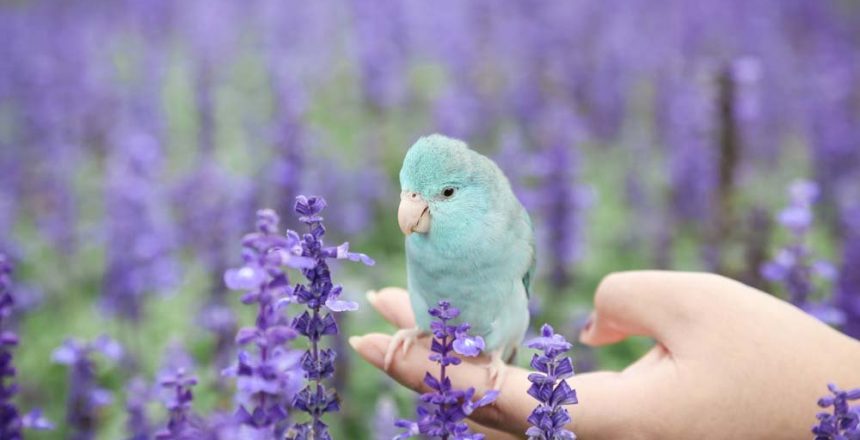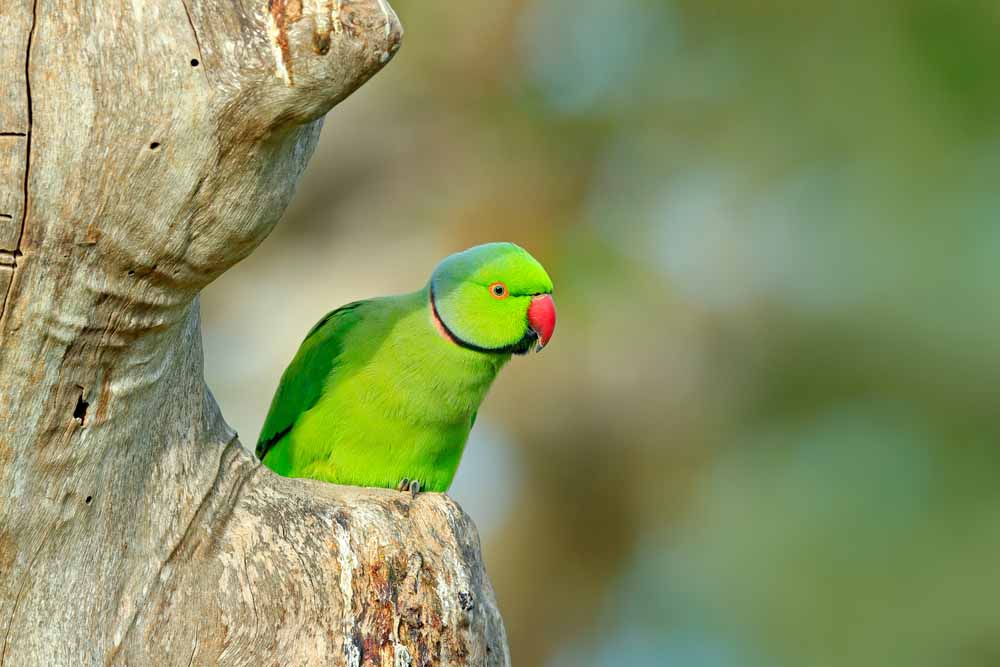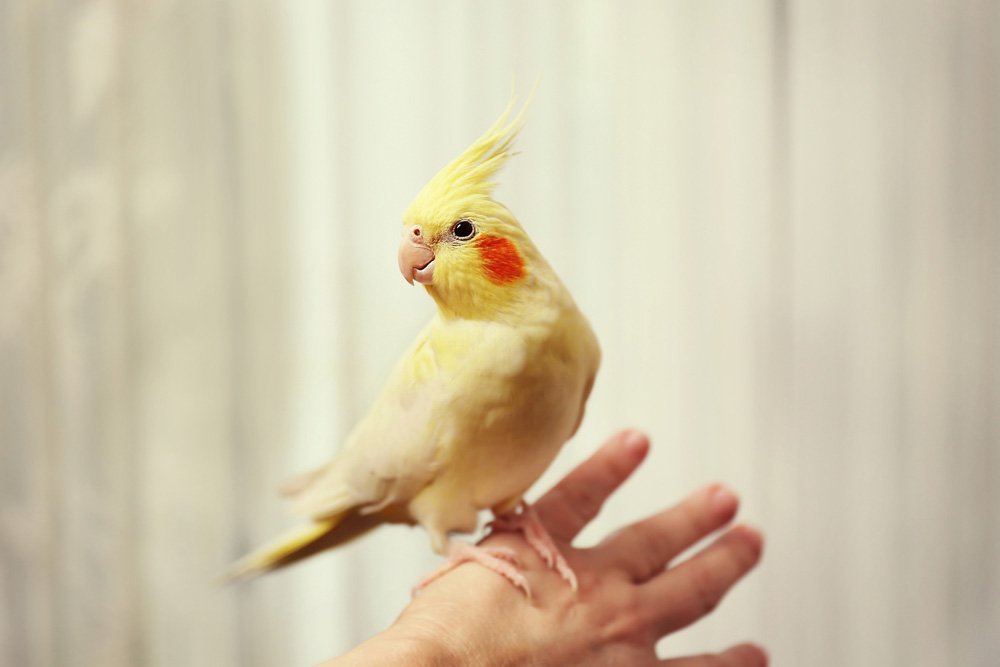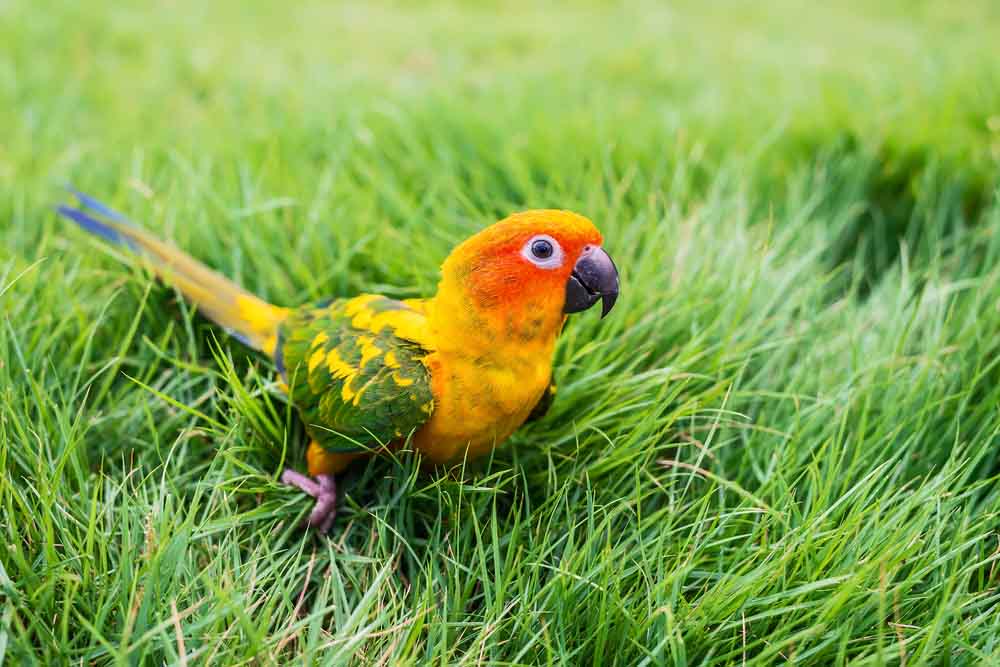Recently, Parrotlets are considered from the smallest captivating birds, and this is due to their cuteness, active behavior and feisty and sassy personality.
Parrotlets are related to the larger, green Amazon parrots. They come in different color mutations: blue, albino, green, white and other shades.
You can find several species of parrotlet such as: Yellowface, Bluewings, Mexicans, Spectacles,… but two among them are very known for the pet trade: the Pacific Parrotlet and The Green-rumped parrotlet. Both have a blue streak on the wings and behind the eye while females do not.
In general, parrotlets have stocky builds and short tails. They are between 4 1/2 to 5 1/2 inches long and weigh around 18 and 28 grams (1/2–1 ounce).
Origin
Parrotlets are endemic to Central and South America.
In the wild, they travel in flocks about 4 to over 100 birds.
Diet
Like other parrots in the wild, parrotlets like to feed on leafy green vegetables, sprouts, fresh fruits… which makes it a natural diverse diet.
Most bird-keepers recommend high-quality commercial pellets because they are lower in fat, and parrotlets don’t fly as much as they do when they are not captivated. Pellets are nutritional complete than just feeding seeds but the owners should first take a look at their ingredients.
This lower fat diet should be supplemented with other food such as: sweet potato, Broccoli, carrots,…also a nutritious calcium source, such as cuttlebone and eggs, is required. Adding some Lafber foods like: Nutri-Berries, Avi-Cakes, Premium Daily Diet will make the parrotlet’s diet full of proteins.
What is more important than the diet itself, is the absorbability.
Most parrot owners don’t know about UV Light, this type of light is to help your birds absorb the nutrients from the food we use it only 1 hour per day. For birds such as parrotlets, we use UVA bcs UVB can damage their eyes.
Do not forget daily fresh water, You can take the advice of your bird’s veterinarian if it is needed.
Cage
The cage is one of the basic requirements of parrotlets or any other pet bird. Try to locate the parrotlet cage in a lively room where sunlight can achieve your bird’s body.
The bigger cage you can offer is the better!
The smallest possible cage you can offer for your parrotlet is 18×18×24 inches. it is considered a very small space for such an active bird. In that cage size the bird can be active only for 2 to 3 hours.
Bar spacing: half an inch and not bigger than that because they can stick their head and break their necks which is too dangerous.
Don’t ever keep more than one parrotlet in a cage, that can lead to killing one another since parrotlets can be a bit aggressive and territorial. You’ll want to keep them on their own in a large cage.
If parrotlets aren’t provided with enough space, they will not have the chance to flight and flap then they will be bored which will result in serious health issues like, plucking out their feathers, gaining weight which is unhealthy, nipping people and chewing up things.
Since parrotlets are messy birds you will have to clean inside and outside the cage after each meal.
Toys
There are lots of toys in different sizes and shapes made by different materials in pet stores such as mirror toys (which are not recommended because these birds cannot distinguish between reality and reflexion and they can stop eating also will lead to other problems), hard plastic toys. That’s why you need to buy toys that are easy to play with like toys made of leather, rawhide, wood, and rope; they enjoy things that move, such as swings on which they may even sleep at night.
Making the arrangement of the cage different every week, changing the places, switching the position of toys will keep the parrotlet engaged and you will save some money on new toys, but toys still not sufficient to play within the cage, what is needed is at least 4 hours/day out of the cage, which is a must.
Parrotlets need to be handled daily and require socialization and daily attention. If left alone, parrotlet will become an untamed bird.
Precautions
pay attention to your bird when he is inside the cage as he is outside it.
+They can die from odeurs due to their very sensitive respiratory tract: air freshners, toxic perfumes… the type of pens because of toxic in those pens that go in the air. These toxic are harsh for birds.
+Try to keep him on a high surface to keep him secure even though he likes to be on the ground.
Some tips to stop your territorial Parrotlet from biting
Before listing those ways, we should first know the reason behind this behavior.
In the wild, parrotlets defend aggressively their territories through hacks and wasps to protect their area. However, parrotlets in captivity protect their territory which is the cage, through bitting things near their places.
1. Try to let your hand far of his cage.
2. Use treats near the cage: provide him with his favorite food whenever your hand is close to you parrotlet’s cage in order to make a good association of your hand near his cage.
3. Learn little parrotlet words: you can learn him two different parrotlet’s sounds and each specific sound of these, means one of these words “Back off” and “Outch” when your parrotlet tend to bite you.
Parrotlet care
The basic things you will need to know in order to take the best care for your parrotlet are:
+The time out of the cage is important because it is the time of social activity and social interaction.
+ the avian veterinarian should be in your area to take care of your parrotlet medically.
+First bird checkup is very important.
+Basic blood check & Quake physical exam will help you to see how things are changing in your bird’s blood.
Parrotlet talking and sounds
Parrotlets as pets are not the best talkers of the parrot family but some individuals learn to mimic and learn quite a few words, while others never will. They may learn up to 10-15 words. Some of them also learn to whistle tunes, which are almost the same as Cockatiel’s, and sounds they are exposed to.
Parrotlet behavior
In the wild, Parrotlet can climb an entire tree on their own and chase the other bird away from it. They are not afraid to fight for their safety. They form lifelong, tight pair bonds with their chosen mates.
Watch out their body language because it shows a lot about their health and behavior.
Facts
- small birds with big personalities.
- Some parrotlets can learn to talk, although they are not especially noted for this ability to talk.
- As most parrots, parrotlets have a long lifespan. They can live for 20 to 30 years in captivity.
- It is crucial to spend at least 4 hours- or more- per day with your parrotlets.
- Parrotlets are referred to as «Pocket parrots » because of their tiny body and small size within the parrot family.



